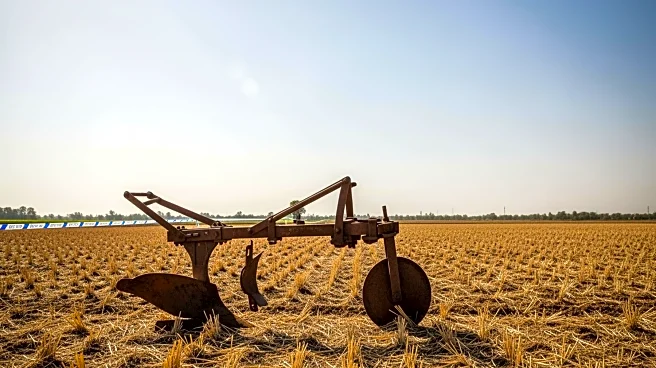What's Happening?
In response to heavy rains affecting several parts of Andhra Pradesh, particularly the south coastal districts, the state's Department of Agriculture has issued guidelines to help farmers mitigate yield
loss. The guidelines, based on recommendations from Acharya NG Ranga Agricultural University, focus on immediate crop management strategies. Paddy, which is cultivated over approximately 15.58 lakh hectares, has been severely impacted, especially in districts like Bapatla, Palnadu, and Nandyal. The untimely rains have disrupted critical growth phases, leading to poor flowering, grain discolouration, and increased susceptibility to diseases such as bacterial leaf blight and blast. The department advises farmers to drain stagnant water, lift lodged crops, and apply specific fungicides and fertilizers to prevent further damage.
Why It's Important?
The guidelines are crucial for minimizing the economic impact on farmers and the agricultural sector in Andhra Pradesh, a state heavily reliant on agriculture. The timely intervention aims to prevent significant yield losses, which could affect food supply and farmers' livelihoods. By addressing issues like water stagnation and disease prevention, the department seeks to stabilize crop production and ensure food security. The measures also highlight the importance of adaptive agricultural practices in response to climate variability, which is increasingly affecting traditional farming cycles.
What's Next?
Farmers are expected to implement the recommended practices immediately to salvage their crops. The Department of Agriculture will likely monitor the situation closely and provide further assistance as needed. The success of these measures could influence future agricultural policies and disaster response strategies in the region. Additionally, the effectiveness of these interventions may prompt similar actions in other states facing climate-related agricultural challenges.
Beyond the Headlines
This situation underscores the broader challenges of climate change and its impact on agriculture. The increased frequency of extreme weather events necessitates a shift towards more resilient farming practices. The guidelines also reflect a growing need for collaboration between agricultural institutions and local governments to develop sustainable solutions. Long-term, this could lead to innovations in crop management and a reevaluation of traditional agricultural calendars.












